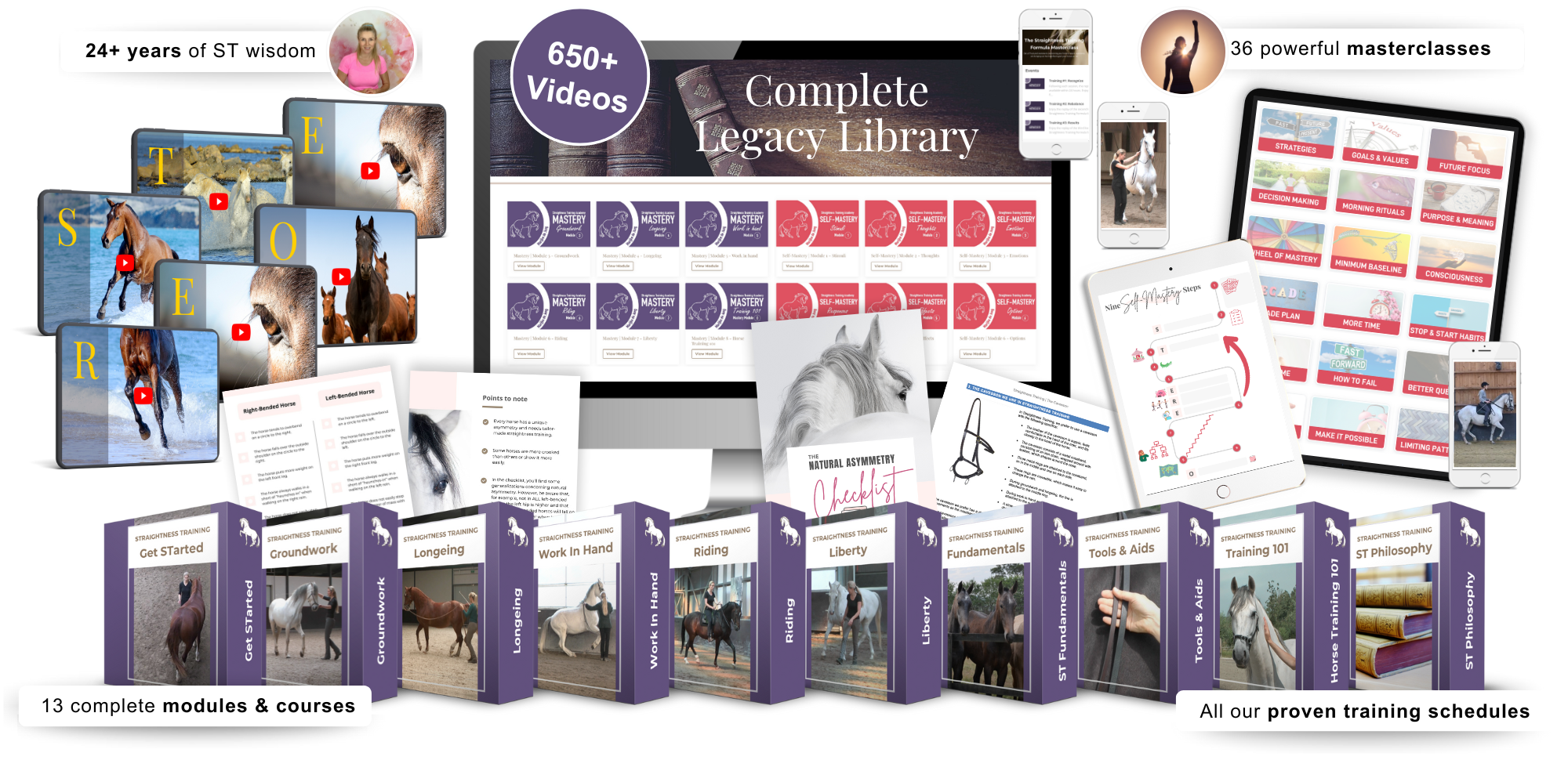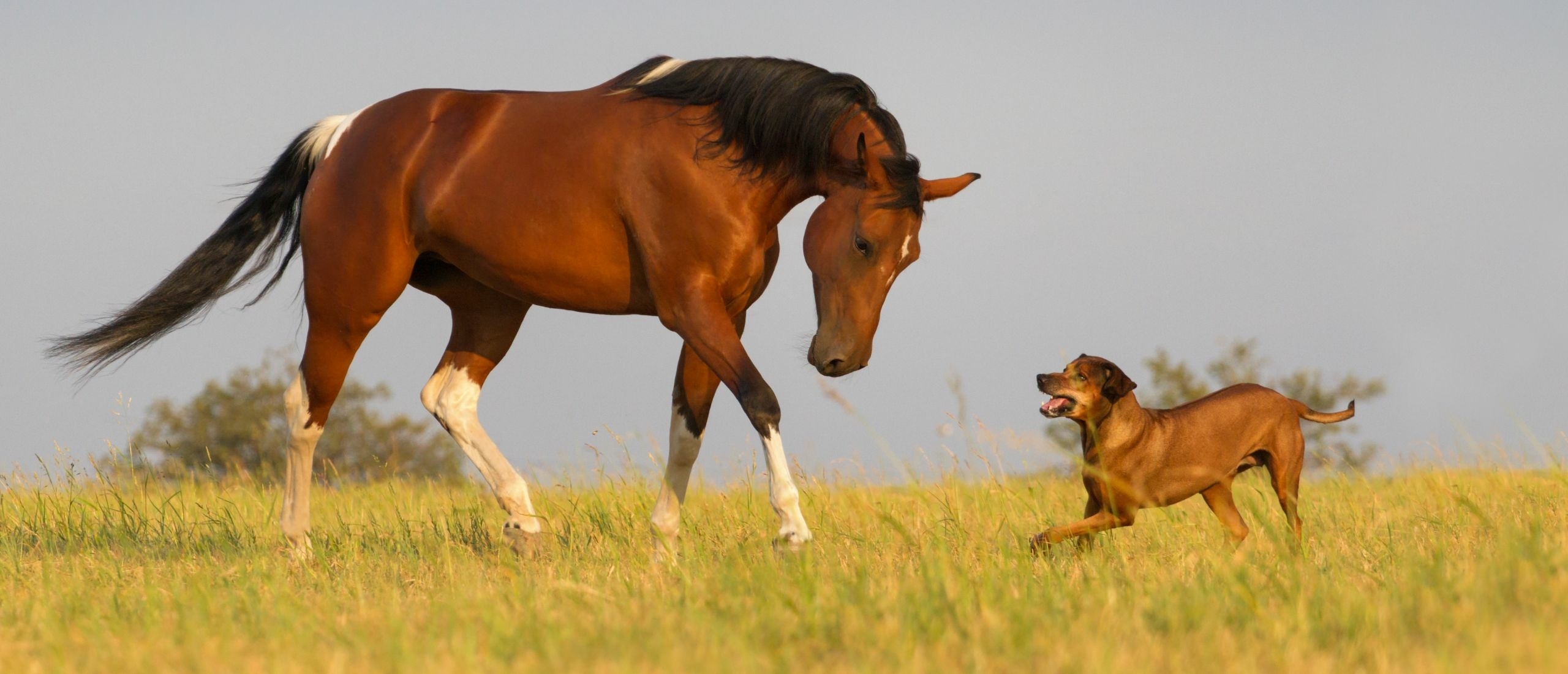
Communication through signals
Horses communicate through a variety of signals:
- Visual signals
- Audible signals
- Chemical signals
- Contact signals
- Discreet or clear signals
- Simple or combined signals
- Context sensitive signals
Visual signals
Examples of visual signals are:
- The posture of the other group members is very well monitored. A relaxed horse has an elongated body and carries his head and neck low. A tense horse is short in the body and has his head and neck up.
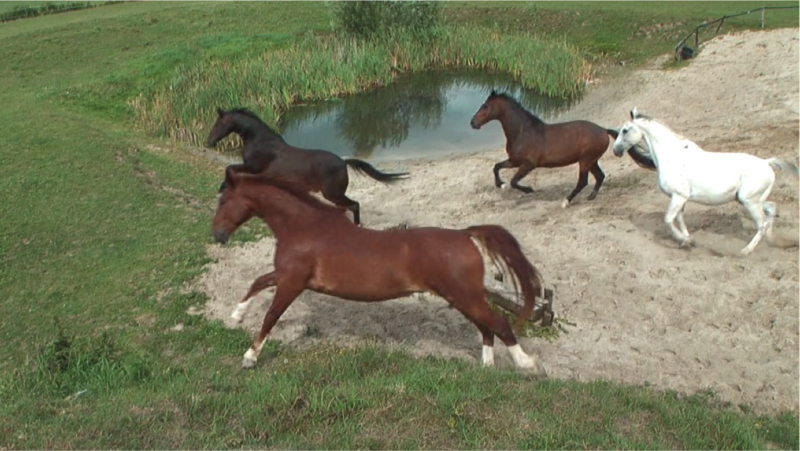
- The group generally mirrors the movementof the lead mare. If the group takes flight, there will be a lot of movement, and the herd will be driven by the stallion who will be walking at the back. During quiet moments of grazing, there will be very little movement visible.
- Foals make fast chewing movements with their mouths to indicate that they are submissive and to show that they do not need to be corrected. Even older horses can sometimes be seen to make this submissive gesture.
- Horses communicate through the subtleties of movements of the ears. Two ears pinned back means “go away”. A horse with two ears forward is alert. A horse with soft ears backwards is focussing on the rider. Read also this article: What does the position of the ears mean? >>
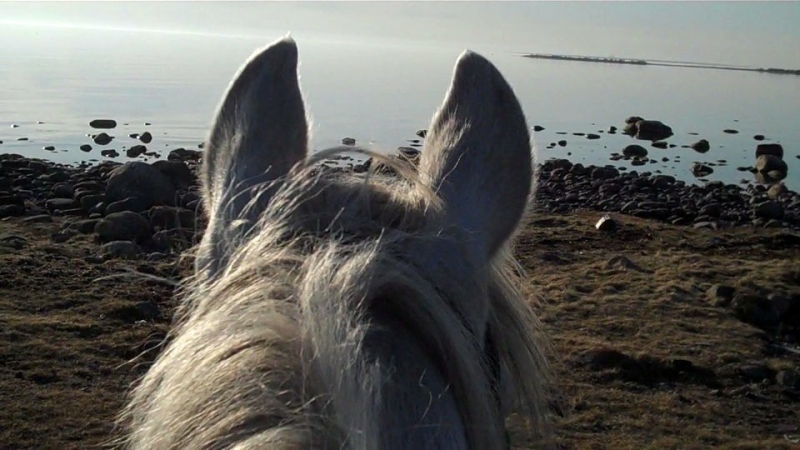

- A horse will show licking and chewing movements if he’s decided not to flee and to be submissive. This is an indication of uncertainty: he is unsure of how his submission will be received. The horse is testing out the new social situation. This is behavior similar to what you will see just prior to the horse ‘joining up’ when you’re working with it in a round pen.
- Horse also use their tail to express how they feel. Read also this article: What does the swishing of the tail mean? >>
- If a horse does not like something, he will show a clear escalation of signals (behavior) before he bites or kicks. He will raise his head, and neck, his ears will go flat back, he will threatens with the mouth open or he will turn his hindquarters towards you and if that doesn’t help I (i.e. you don’t back off) … he will bite / kicks.
Audible signals
Under audible signals we categorize:
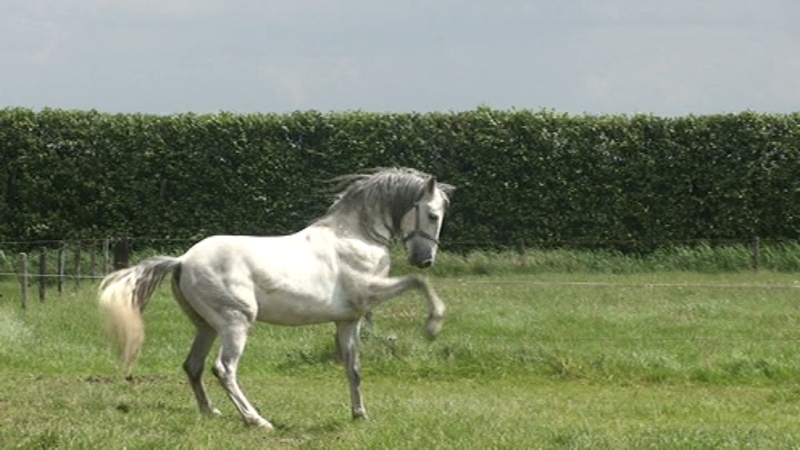
- Loud whinnying: The horse is saying ‘’ Hey, I am here, where are you?’.
- Kindly whinnying: The horse is saying ‘’Hello’’. It is also the sound that a mare makes to her foal.
- Squeal: Horses that first meet each other for the first time often make a loud squeaky cry. This is called a squeal.
- Snorting: When horses are excited they can make snorting noises. They blow air out from their nostrils.
- Groaning: Whilst horses are getting up after rolling, they sometimes can groan. Horses that are in pain can groan as well.
- Scream or cry: In extreme excitement or violence a horse can give a penetrating scream or cry.
- Pounding: Pounding with the hooves can be a sign that the horse is uncomfortable.
- Pawing: Pawing with the front legs is a sign of frustration.
Chemical signals
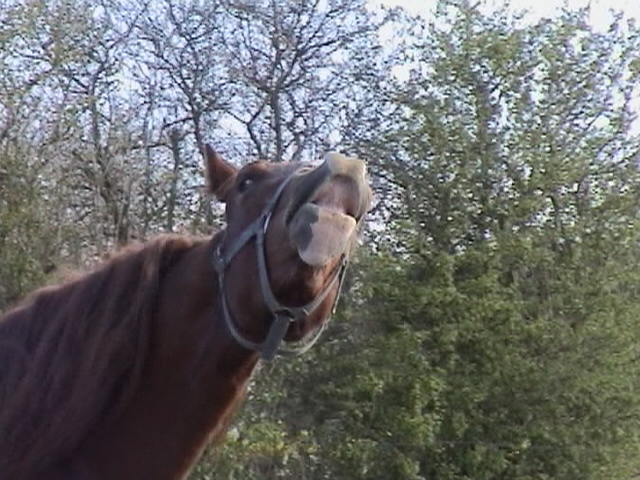
Riders underestimate the power of chemical signals, because we do not have such a good sense of smell. Examples of chemical signals are:
- When horses meet each other for the first time they will smell each other’s nose and mouth, followed by smelling the flanks and belly.
- The scent of each individual horse is very important for recognition. If we have washed our horse, it may be that he will not be recognized by the group. So, the smell is very important for the identification of the horse.
- A foal who waves his tail from side to side is wafting his scent towards the mare, this is important for the bonding process between foal and mare.
- A mare will show the stallion via her urine where she is in her estrus cycle.
- Stallions often defecate in the same places and on the same pile, the so called ‘dung pile’ to show their strength. Therefore, stallions will utilize their grazing much more efficiently than mares and geldings. The mares and geldings leave their manure everywhere and horses do not like to graze close to manure.
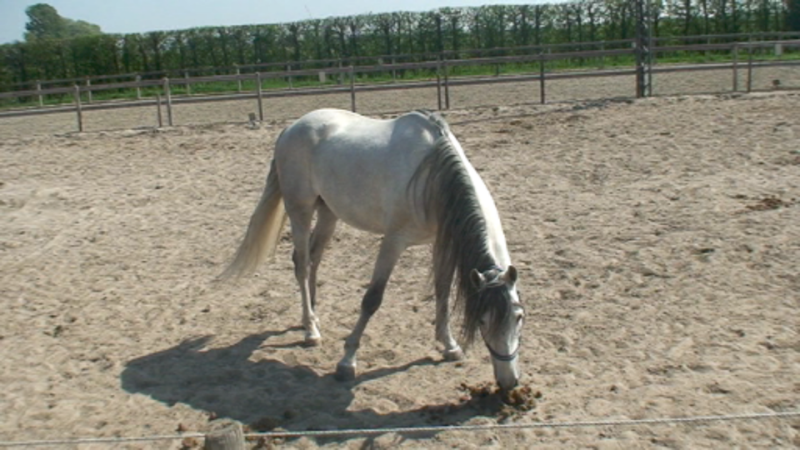
- Mares who have lost the group can find their group back by the smell of the manure. So, the manure helps navigation and orientation.
Contact signals
Horses can take good care of themselves by rolling and scratching. But they also groom each other. This “grooming” has both a caring and a social function. This mutual grooming reduces the heart rate and calms horses. Horses in the wild also use mutual grooming to check each other for parasites.
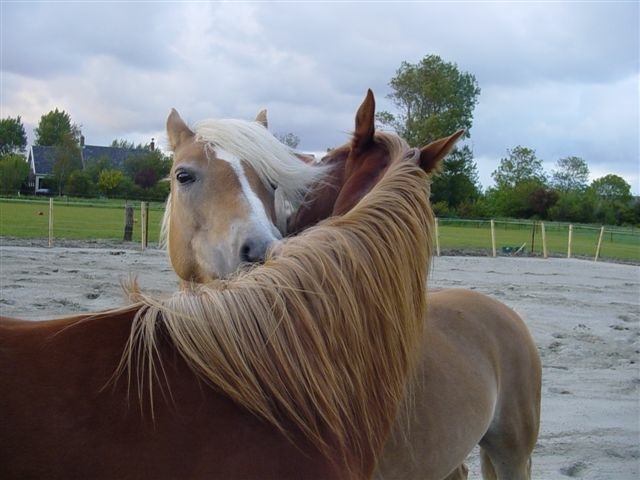
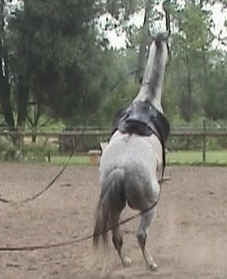 Discreet or clear signals
Discreet or clear signals
Horses give very clear signals, but also very subtle signals.
- Avery clear signal is rearing up.
- A discreet signal is to leave piles of manure over other piles for example.
Most signals given by a horse are subtle, because if you draw attention to yourself you point out where you are and the predators can find you easier.
Simple or combined signals
 Horses communicate through simple or complex combined signals.
Horses communicate through simple or complex combined signals.
- A simple signal is whinnying.
- A combined signal can be a movement of the mouth, ears and tail.
Different combinations mean different things:
If the horse’s mouth is open and another horse is approaching, when the lower lip droops and we can see the incisors, it could be that the ears are pointed forward and in that case it could mean that the horse is inviting the other horse to come for a bit of mutual grooming. However, if the ears are pointing backwards, this in combination with the mouth signals could be an aggressive threat.
Context sensitive signals
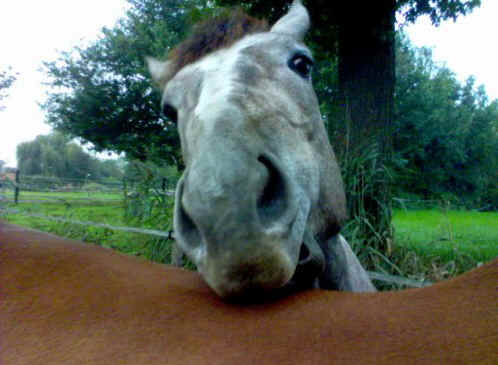
The context in which the message is received is also important. For example:
- When a mare is sexually receptive toward a stallion, the stallion will not show any interest in the urine of the other mares. If there are no receptive mares, the stallion will examine every puddle in detail.
- It could be a warning when a horse softly bites the skin of another horse, but it could be also an invitation to play.
The more you know, the more you can go!
The more you know about horse language and the better you understand how horses communicate, the better you can do Straightness Training.
When you can anticipate and respond to their signals in a proper way, things will stay safe, relaxed and comfortable for both rider and horse.

